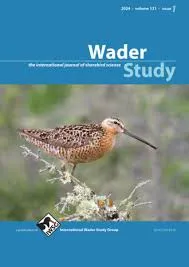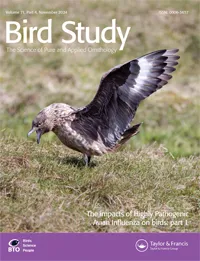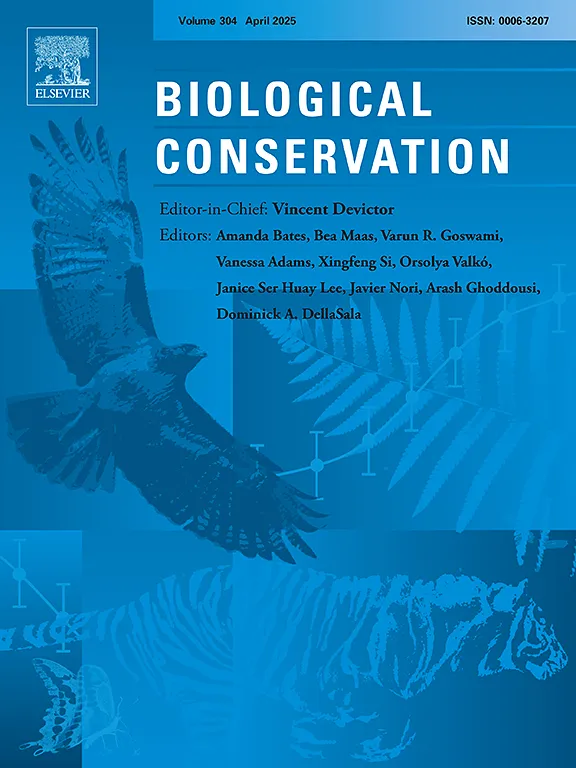BTO publishes peer-reviewed papers in a wide range of scientific journals, both independently and with our partners. If you are unable to access a scientific paper by a BTO author, please contact us.
Search settings
A review of Curlew headstarting projects in Europe
Author: Ewing, H. Bowgen, K.M., Burton, N.H.K., Saunders, R., Perkins, A., Gajko, A., O’Donoghue, B., Kala, B., Kerperin, C., Kelley, C., Heward, C.J., Krupiński, D., Nijs, G., Weber, H., Düttmann, H., Kruckenberg, H., Deiting, J., Thiess, L., Szajda, M., Maluśkiewicz, M., Boschert, M., Obłoza, P., Tüllinghoff, R., Kelly, S.B.A., Grigg, T. & Franks, S.E.
Published: 2025
Breeding waders are among the most threatened of European bird species and the focus of a suite of conservation interventions, such as the improvement of grassland nesting habitats, and the protection of nests and chicks from predators and destruction by agricultural activities. Headstarting is a relatively novel technique in breeding wader conservation, where eggs are removed from the wild and reared in carefully controlled environments. It aims to bypass the threats individuals encounter during vulnerable early life stages in the wild. Headstarting differs from more traditional forms of captive rearing, in that individuals only remain in captivity for a small part of their life cycle (generally egg and hatchling stages) and are released once at a less vulnerable stage to provide a quick, artificial boost to the breeding productivity of a wild population.
01.04.25
Papers

Post-fledging movements in an elusive raptor, the Eurasian Goshawk Accipiter gentilis: scale of dispersal, foraging range and habitat interactions in lowland England
Author: Henderson, I., Barton, M., Field, A., Husbands, R., Jones, G., Armour-Chelu, N. & Conway, G.J
Published: 2025
GPS tracking of young Goshawks in lowland England reveals the movements and habitat use of this species, how these characteristics differ between the sexes, and how they change over the birds’ early lives.
14.03.25
Papers

The proportion of common pheasants shot using lead shotgun ammunition in Britain has barely changed over five years of voluntary efforts to switch from lead to non-lead ammunition
Author: Green, R.E., Taggart, M.A., Pain, D.J., Clark, N.A., Cromie, R., Dodd, S.G., Elliot, B., Green, R.M.W., Greenwood, L., Huntley, B., Leslie, R., Porter, R., Price, M., Roberts, J., Robinson, R.A., Smith, K.W., Smith, L., Spencer, J., David Stroud, D. & Thompson, T.
Published: 2025
A full voluntary transition from lead to non-lead shotgun ammunition by 2025 only resulted in a slight, non-significant downward trend in the proportion of Pheasants killed using lead shot over the five-year transition period.
06.03.25
Papers

Potential effects of HPAI on occupancy rates, breeding success, age and turnover of breeding Peregrine Falcons Falco peregrinus in southern Scotland
Author: Smith, G.D., McGrady, M.J., Beckmann, B.C. & Oli, M.K.
Published: 2025
06.03.25
Papers

The Białowieża Forest as an example of the resilience of long-term studies in a changing world
Author: Broughton, R.K., Cholewa, M., Czeszczewik, D., Fuller, R.J., Jaroszewicz, B., Kuijper, D.P.J., Maziarz, M., Mikusiński, G. & Neubauer, G.
Published: 2025
Long-term studies offer valuable ecological insights but are vulnerable to change. Environmental, social and geopolitical changes bring risks and opportunities. Poland's Białowieża Forest has seen decades of changes and provides lessons of research resilience. Collaborative teams and leadership dispersed between institutes disperses the risk, and adaptability in exploiting opportunities aids the continuity of long-term studies.
01.03.25
Papers
